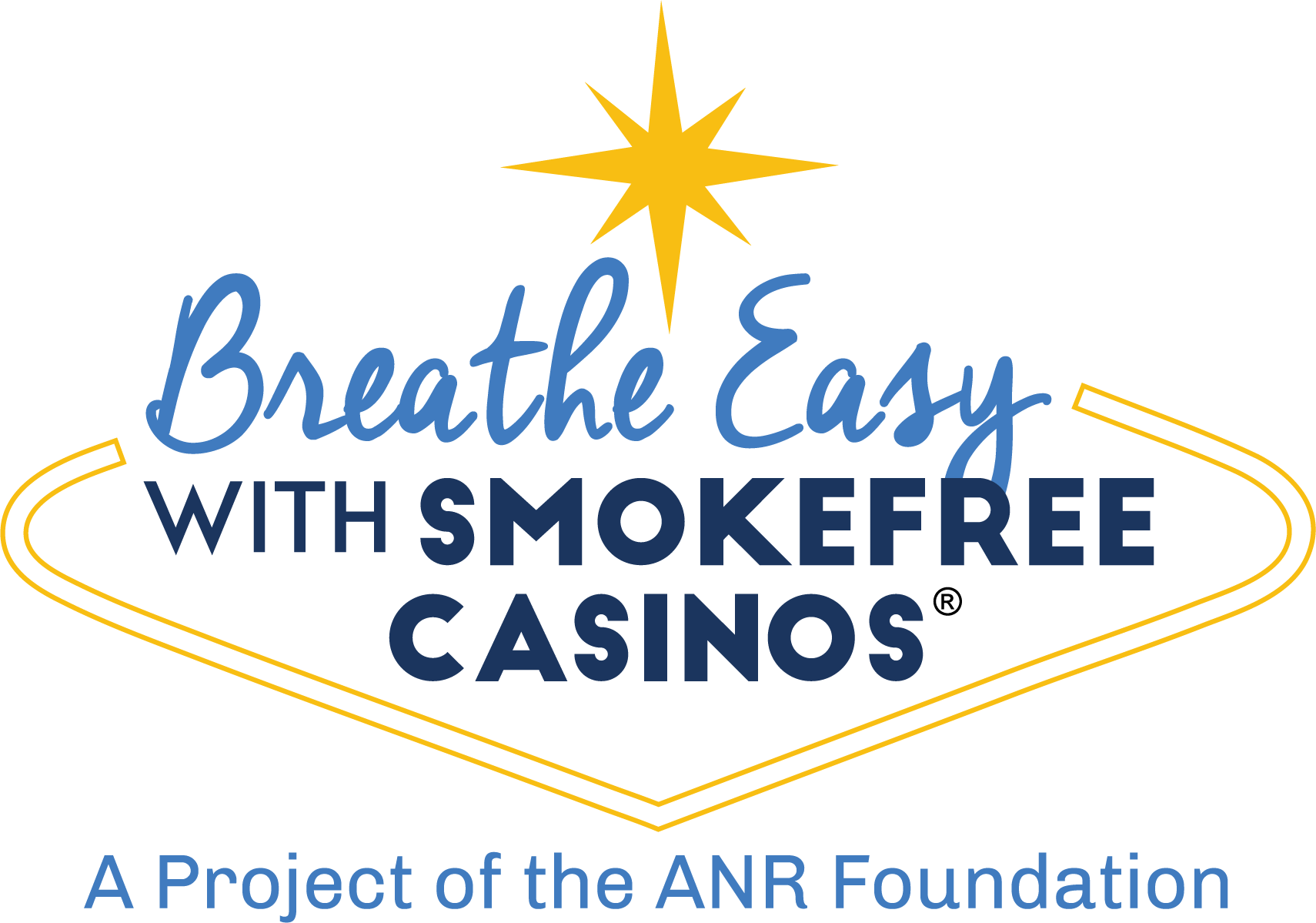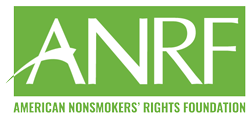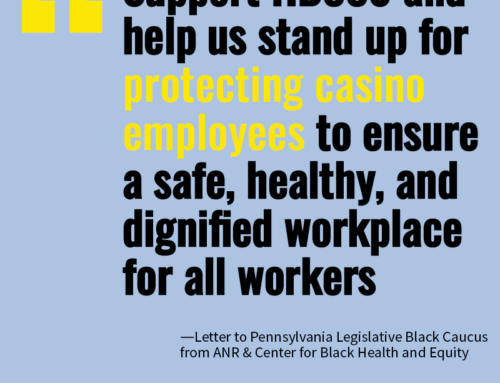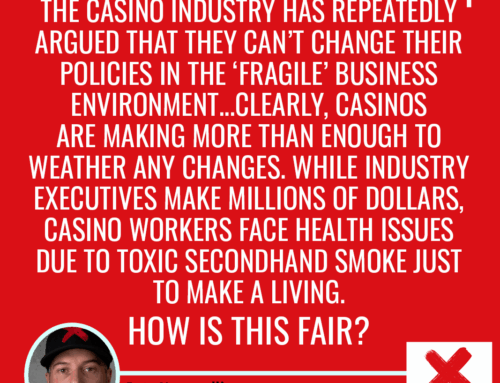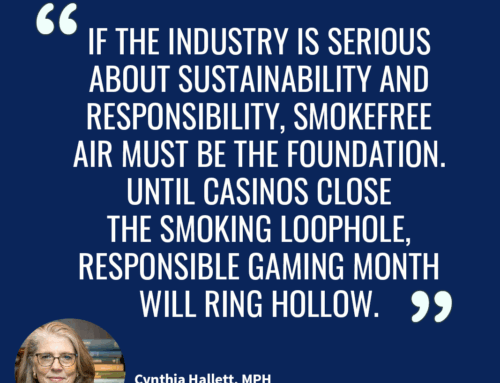TIPS FOR GOING SMOKEFREE
Rebuilding a Healthier Economy and Workforce
“Our thoughts are with everyone impacted by coronavirus, including front-line healthcare workers, and workers in the hospitality and entertainment industries. Just as social distancing and handwashing help prevent the spread of disease, eliminating secondhand smoke is critical to prevent acute and chronic diseases, and saves lives.”
-Cynthia Hallett, ANRF President and CEO
Now more than ever, businesses are emphasizing the importance of protecting their bottom line AND the health and safety of employees and customers. Secondhand smoke is a top preventable cause of disease and death, killing 42,000 Americans every year. Secondhand smoke is also a risk factor for susceptibility to more severe COVID-19 symptoms because of the demonstrative impact it has on underlying heath conditions including heart disease, diminished lung function, and associated risk of respiratory illnesses. When business resumes, those who are considered high-risk and susceptible to virus exposure will need to do their best to avoid smoke-filled environments. Survivors of COVID-19 with lung damage will also need to avoid secondhand smoke.
Only 100% smokefree environments can guarantee protection to employees and patrons from the toxins in secondhand smoke. Just like coronavirus, secondhand smoke spreads throughout a building. Ventilation systems cannot eliminate exposure to the gases, toxins, carcinogens, and particulate matter contained in secondhand smoke and e-cigarette aerosol. Even during brief or low levels of exposure, secondhand smoke still creates significant health risks especially to the cardiovascular system. Thirdhand smoke is the name for the tobacco residue from cigarettes, cigars, and other tobacco products that is left behind after smoking and builds up on surfaces and furnishings. Thirdhand smoke is composed of numerous types of gasses and sticky, toxic particulate matter, including carcinogens and nicotine, that re-emit back into the air.
For casinos and hospitality sector businesses, now is the logical time to go smokefree indoors. While your business undergoes a deep cleaning to disinfect against germs and viruses, it’s also an ideal time to have a cleaner and healthier environment by eliminating exposure to the health hazards in secondhand smoke, thirdhand smoke, and e-cigarette aerosol.
Rest assured that you are in good company in making this important decision for your valued employees and customers. There are approximately 800 smokefree casinos and gambling venues in the U.S, including sovereign tribal casinos like Ho-Chunk Gaming Madison. Twenty states already require commercial casinos to be smokefree including Ohio, Maryland, Massachusetts, Colorado, and more.
Local, state, and Tribal smokefree laws help build regional regulatory parity for business and health parity for the hospitality workforce. Consider joining efforts to close gaps in smokefree laws in your area.
SIMPLE STEPS TO GOING SMOKEFREE
Going smokefree can be a seamless transition. We recommend these easy steps that you can take TODAY to make your business smokefree:
- Inhale. Exhale. Go for it! – Make the healthy choice the easy choice. Establish your business as 100% smokefree indoors to protect the health of every employee and to encourage re-engagement of a consumer market eager to rebuild, but hesitant to jeopardize its health in the process.
- Spread the news – Announce to all employees and customers that you have now adopted a smokefree policy for the health of everyone. Social media is a great way to engage with your audience and provide an outlet for questions or concerns.
- Post signage – The vast majority of U.S. adults are nonsmokers which eases enforcement of the policy. Removing ashtrays and posting signs that indicate that the establishment is smokefree helps let everyone know how to comply.
- Discuss the new policy with your employees – Explain how the policy affects your business using routine methods, such as staff meetings, payroll stuffers, break room posters, or emails. If you have employees who smoke, explain where and when they may smoke during work hours.
- Prepare your employees to implement the policy when business reopens – Train staff on the new policy and the protocol for handling customers who are not following the policy. Help them prepare what to say to customers who smoke.
- Enjoy the benefits – Smokefree air protects the health and safety of workers along with those who have respiratory and cardiovascular illnesses. Smokefree air will help keep the air safe and welcoming in hospitality and entertainment workplaces for everyone.
DOWNLOAD OUR SMOKEFREE CASINOS CHECKLIST (PDF)
Visit www.no-smoke.org for more information on smokefree environments.
